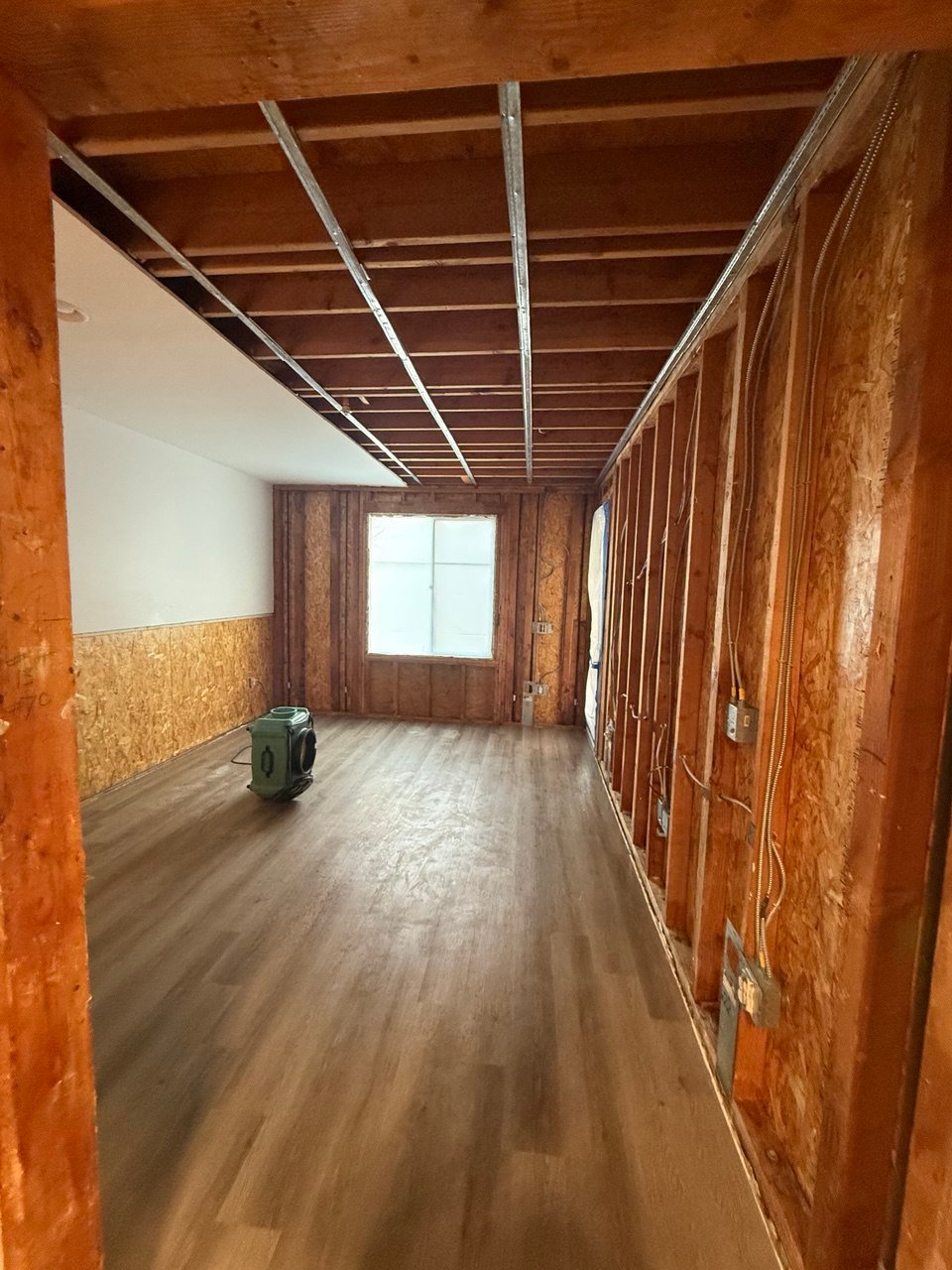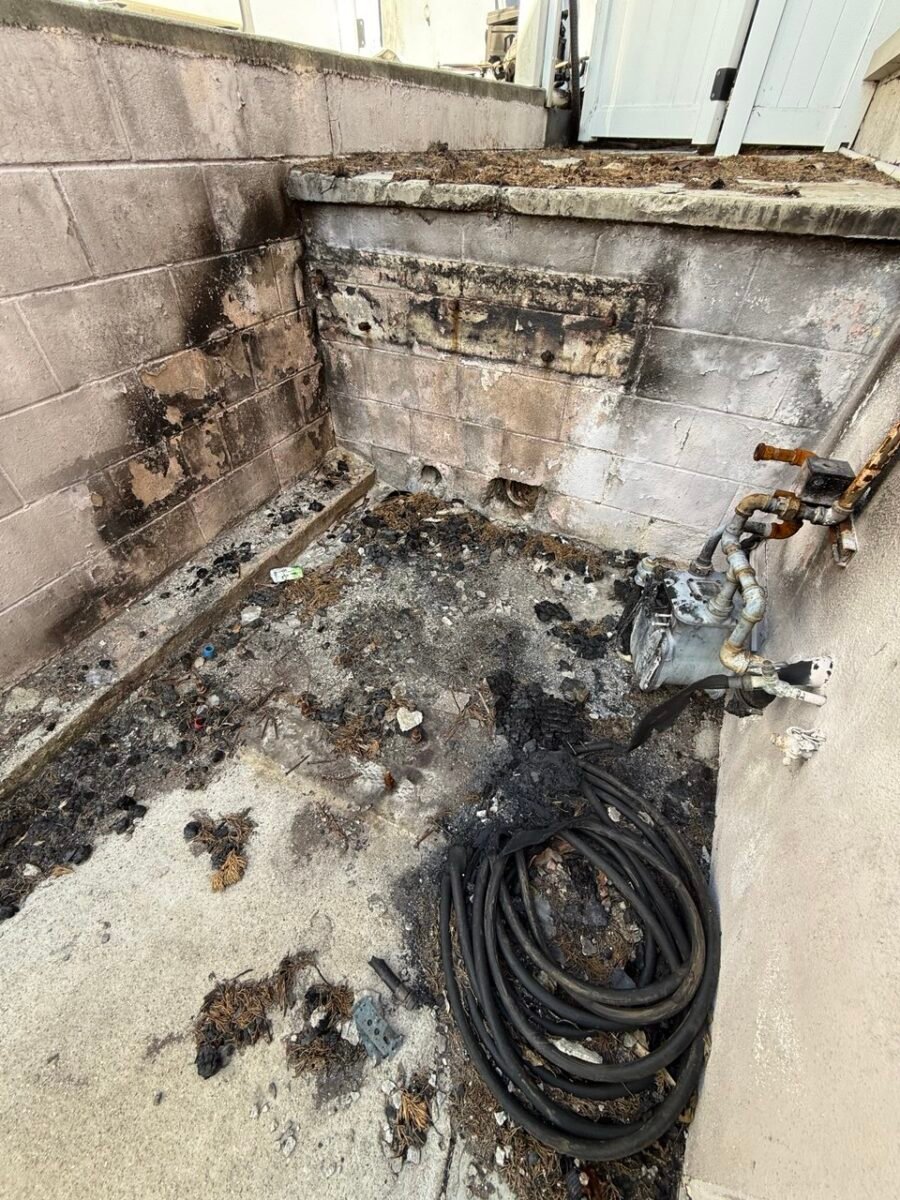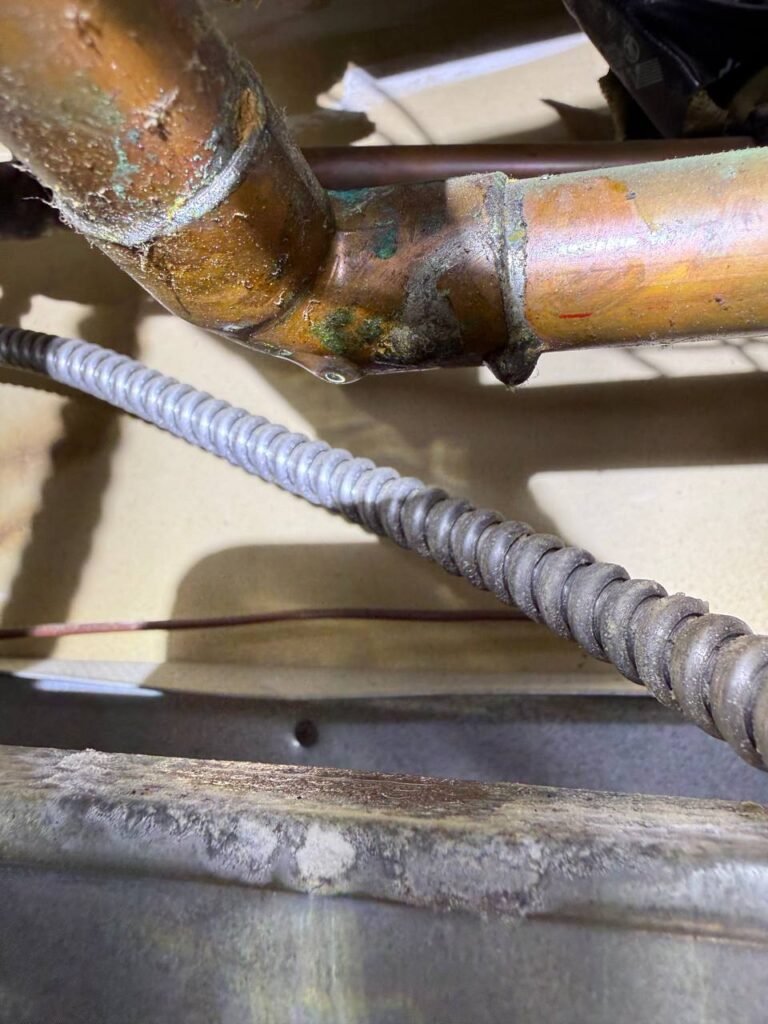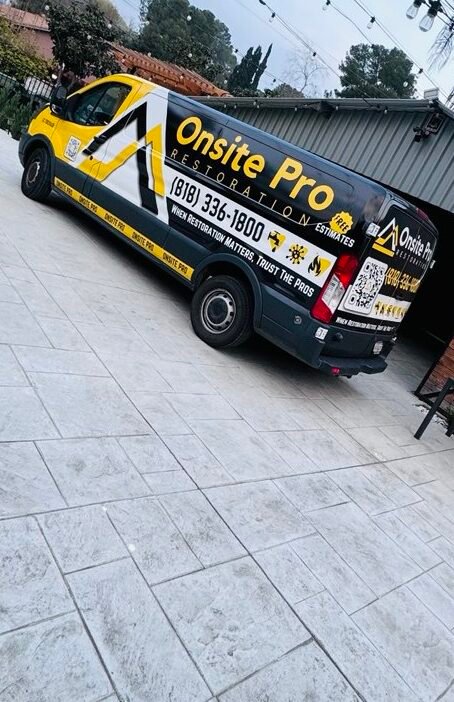When a pipe bursts in your Sherman Oaks home or a winter storm tears through your neighborhood, the first question on your mind is, “Am I covered?” A progressive insurance homeowners policy is designed to handle the fallout from sudden disasters like fire, wind damage, and plumbing failures.
But it’s not a catch-all. Think of your policy like a high-quality rain jacket—it’s fantastic at stopping a sudden downpour but won’t do much for a slow, seeping leak that’s been dripping for months. Understanding this distinction is the key to a smooth claims process and a successful recovery. If you’re facing damage, don’t wait.
Get Started
Service Form
What Your Progressive Homeowners Policy Actually Covers
Knowing the ins and outs of your progressive insurance homeowners policy is your first and best tool for recovery. These policies are designed to be a shield against unexpected, catastrophic events, not a warranty for general home maintenance.
Progressive is a huge player in the insurance world. They hold a massive 6.18% market share in the U.S. homeowners insurance space, making them one of the top five property and casualty insurers in the country. This means they process a staggering volume of claims every day. For you, the homeowner, that scale makes it even more critical to understand exactly what your policy promises before you ever need to file. You can see how they stack up against the top homeowners insurance companies on Claimsmate.com.

Standard Progressive Homeowners Policy Coverage Overview
Dwelling (Coverage A) — Protects: the physical structure of your house (walls, roof, foundation, etc.). Key takeaway: the big one—funds to rebuild your home after a covered disaster.
Other Structures (Coverage B) — Protects: detached structures like a garage, shed, or fence. Key takeaway: covers buildings on your property not attached to the main house.
Personal Property (Coverage C) — Protects: your belongings (furniture, electronics, clothes, and more). Key takeaway: covers your “stuff” if it’s damaged, destroyed, or stolen.
Loss of Use (Coverage D) — Protects: temporary living expenses if your home is uninhabitable. Key takeaway: pays for hotels, meals, and similar costs during repairs.
Personal Liability (Coverage E) — Protects: legal and medical costs if someone is injured on your property. Key takeaway: shields you from major financial risk if you’re found legally responsible.
Understanding Your Coverage for Water and Fire Damage
Dealing with a major fire or flood is one of the most stressful things a homeowner can go through. In the middle of all that chaos, the last thing you want to do is try to translate the dense legal language in your progressive insurance homeowners policy. Let’s break down what your policy actually means when you’re facing water or fire damage, so you’re prepared before disaster ever strikes.
Think of your policy as a playbook for emergencies. It has specific rules for specific events, and knowing those rules is the key to a smooth recovery.
The Nuances of Water Damage Coverage
In the world of insurance, not all water damage gets treated the same. Progressive, like most carriers, draws a big, bold line in the sand between damage that is sudden and accidental and damage that happens over time.
- Covered Scenario: Your washing machine hose suddenly gives out in your Beverly Hills home, sending water gushing across your laundry room and soaking the drywall. That’s a classic covered event—it was abrupt, totally unexpected, and accidental.
- Uncovered Scenario: Now, picture a tiny, slow leak behind your shower tiles that you don’t notice for months. The mold and rotted wood that result are considered a maintenance problem, not a sudden accident, so coverage is typically denied.
This is a critical distinction. Insurers operate on the assumption that homeowners will keep up with basic maintenance to prevent slow, predictable damage. You can get a deeper dive by reading our guide on what homeowners insurance covers for water damage.
Key Takeaway: The source and speed of the water are everything. If it’s a sudden and internal failure, you’re likely covered. If it’s a slow leak, flood, or sewer backup (without a specific add-on), you probably are not.
How Fire Damage Coverage Works
Thankfully, fire damage coverage is usually much more straightforward. A standard progressive insurance homeowners policy is built to offer solid protection against fire, and that coverage goes way beyond just the flames themselves.
This protection is layered, designed to help you piece your life back together after the fire is out.
Beyond the Structure
Fire damage coverage is about more than just rebuilding walls. It typically includes several essential parts that work together:
- Dwelling Repair or Rebuild: This is the core of your policy. It provides the money to either repair the damaged parts of your house or, in a worst-case scenario, rebuild it from the ground up.
- Personal Property Replacement: This covers everything inside your home—your furniture, clothes, TVs, and so on. Your policy will compensate you for the value of these items so you can start replacing what was destroyed.
- Smoke and Soot Cleanup: The damage doesn’t stop when the fire trucks leave. Soot and smoke residue can ruin surfaces and create serious health hazards. Your policy covers the cost of professional remediation to get your home properly cleaned and deodorized.
- Additional Living Expenses (ALE): If you can’t live in your home while it’s being repaired, this coverage is a lifesaver. Often called “Loss of Use,” it pays for reasonable costs like a hotel stay, a temporary rental, and even the extra expense of eating out.
Knowing these different layers of protection is empowering. It shows your policy isn’t just about the structure; it’s about helping you rebuild your life. Understanding these details ahead of time makes for a much smoother and less stressful claims process if you ever need it.

Navigating the Progressive Claims Process Step by Step
When your home takes a hit from water or fire, filing an insurance claim can feel like trying to find your way through a maze in the dark. But it doesn’t have to be an overwhelming ordeal. With a clear roadmap, the progressive insurance homeowners policy claims process becomes much more manageable.
Knowing what to do from the moment you discover the damage is the single most powerful tool you have. It sets the stage for a smooth, fair outcome.
Your Immediate First Steps
The first few moments after a disaster are chaotic, but how you respond right then and there is critical for a successful claim. Before you even think about calling Progressive, your focus should be on safety and documentation.
Ensure Safety First
If you’re dealing with a major disaster like a fire or a serious flood, your family’s safety is the only thing that matters. Get out, and don’t go back in until the authorities give the all-clear.
Mitigate Further Damage
Your policy actually requires you to take reasonable steps to keep things from getting worse. That could mean throwing a tarp over a hole in the roof to keep rain out or shutting off the main water valve after a pipe bursts.
Document Everything
This is huge. Before a single thing is moved or cleaned up, pull out your phone. Take tons of photos and videos of the damage from every angle imaginable—get close-ups of broken items and wide shots of the entire room. This visual proof is pure gold.
This initial process is all about protecting your family and your claim before you officially kick things off. As you can see, gathering solid evidence before you file empowers you in every conversation you’ll have with your adjuster down the line.
Making the Call and Working with an Adjuster
Once you have your initial photos and videos, it’s time to contact Progressive. You can usually file a claim right from their website, use their mobile app, or call the 24/7 claims hotline. Just be ready with your policy number and a simple, clear story of what happened.
Pro Tip: When you make that first report, just stick to the facts. State what happened, when it happened, and the damage you can see. Don’t guess about the cause or how much repairs will cost—that’s what the experts are for.
After you file, Progressive will assign a claims adjuster to your case. This person becomes your main point of contact. Their job is to look into the loss, figure out what your policy covers, and estimate the repair costs. They’ll schedule a time to come see the damage in person.
It’s important to remember that the adjuster works for the insurance company. Having an organized file and a professional restoration company like us in your corner helps get everyone on the same page. Data from the National Association of Insurance Commissioners shows that insurance is a business of details, so providing clear, undeniable proof is your best strategy.
Understanding the different phases is crucial. You can get a better sense of what to expect by reviewing a typical insurance claim timeline and its key milestones. Knowing what’s coming next helps lower the stress and keeps the whole process moving forward.

Speaking the Adjuster's Language
Progressive adjusters see hundreds of claims. To approve work quickly, they need specific, industry-standard documentation. An experienced restoration company speaks their language fluently, handing them the exact proof they need without any friction.
This isn’t just about sending a simple invoice. We’re talking about a detailed file that proves every step of the process. This file often includes:
- Itemized Repair Scopes: This is a line-by-line breakdown of every single task, from tearing out wet drywall to applying antimicrobial treatments. It’s all created using software like Xactimate, which is the same platform insurers use and trust.
- Moisture Maps and Readings: For water damage, technicians create detailed diagrams showing exactly where moisture is trapped inside walls, floors, and ceilings. This justifies why certain drying equipment is needed and for how long.
- Photographic Evidence: A comprehensive photo log documents the damage before, during, and after the work is done. It leaves zero room for debate about what needed to be fixed.
When an adjuster gets this kind of professional documentation, a potentially contentious back-and-forth becomes a straightforward review. That’s how you get your claim approved faster.
How a Restoration Company Can Streamline Your Claim
Think of your progressive insurance homeowners policy as the financial safety net that catches you after a disaster. But the restoration company? They’re the expert crew that rebuilds that net, piece by piece. They act as your project manager, translator, and advocate all rolled into one, bridging the gap between you and the insurance adjuster to get your home put back together correctly.
After a fire or flood, your mind is rightfully on your family’s safety. A professional restoration team steps in to wrangle the complicated logistics of recovery, preventing costly mistakes and frustrating delays from piling up.
Acting as Your Advocate and Project Manager
A great restoration company does far more than just fix the damage; they manage the entire project from start to finish, making sure everything aligns with your policy’s requirements. While the adjuster’s job is to assess the loss for the insurance company, your restoration team works for you. Their one and only goal is to return your property to its pre-loss condition.
A skilled restoration partner acts as a crucial translator. They convert the physical damage in your home into the precise data and documentation that your progressive insurance homeowners policy requires for approval.
This advocacy is absolutely vital. For instance, an adjuster’s initial estimate might overlook the cost of matching a specific type of flooring that runs through multiple rooms. Your restoration expert will step in with evidence and industry standards to justify the correct, more comprehensive repair. This is what keeps you from ending up with a mismatched, patchwork fix or an unexpected bill.
Ultimately, partnering with the right team from the very beginning is one of the most important decisions you’ll make. Learning how to choose a restoration company in Los Angeles is a critical step in protecting your investment and ensuring a smooth recovery. Their expertise doesn’t just restore your home—it provides genuine peace of mind when you need it most.

Common Homeowners Insurance Myths Debunked
What you think you know about your progressive insurance homeowners policy can cost you. Big time. Misconceptions lead to huge headaches and unexpected bills right when you’re most vulnerable. Believing a common myth could be the difference between a smooth recovery and a frustrating, costly denial.
Let’s clear the air and tackle some of the most persistent myths head-on. Knowing the reality behind these assumptions will empower you to make smarter decisions and sidestep common pitfalls.
Myth One: Flood Damage Is Covered
This is probably the most dangerous and widespread myth in home insurance. It’s easy to assume that any water that enters your home is covered, but that’s a massive oversimplification. Reality: Standard homeowners policies, including those from Progressive, explicitly exclude damage from flooding. A flood isn't just any water—it's specifically defined as rising surface water from outside sources, like an overflowing river or torrential rain that swamps your property. To get that protection, you need a separate flood insurance policy, usually through the National Flood Insurance Program (NFIP).
Myth Two: All Water Damage Is the Same
Right behind the flood myth is the belief that if water damage starts inside the home, it's automatically covered. Again, this is a costly assumption. Reality: The key phrase is "sudden and accidental." A pipe that bursts out of nowhere? Covered. But that slow, dripping leak under the sink that causes rot and mold over six months? That's seen as a maintenance issue, and it's almost always denied. The source and speed of the water are everything. The core idea behind a progressive insurance homeowners policy is to protect you from sudden disasters, not to act as a home warranty for gradual wear and tear.
Myth Three: My Policy Pays to Replace Everything with Brand New Items
This one trips up a lot of people. It hinges on two critical terms in your policy: Replacement Cost Value (RCV) and Actual Cash Value (ACV). They sound similar, but the payout difference is enormous. Reality: Actual Cash Value pays you for what your damaged item is worth today, factoring in depreciation. So, your 10-year-old couch is valued as a 10-year-old couch—not what you paid for it. Replacement Cost Value is the good stuff; it's designed to pay the full amount needed to buy a brand-new, similar item. Many policies pay the ACV first, then release the rest of the funds once you’ve actually bought the replacement and sent in the receipts. Knowing which one you have is critical for budgeting your recovery.
Myth vs. Reality in Homeowners Insurance
Myth: “My premium won’t go up if I file a small claim.”
Reality: Any claim can affect your rates or even renewal eligibility. For minor issues, it’s often cheaper long-term to pay out-of-pocket.Myth: “My policy covers mold no matter what.”
Reality: Most policies cap mold coverage at low limits (often $5,000–$10,000) and only cover it when caused by a covered event (e.g., a sudden pipe burst).Myth: “I’m covered for sewer backups.”
Reality: Sewer and drain backups are typically excluded. You need an added endorsement (rider) for this coverage.Myth: “The contractor’s estimate is all I need.”
Reality: Insurers rely on systems like Xactimate and require detailed documentation—itemized scopes, moisture readings, and photo logs—not just a single number.
Even when you think you know your policy, real-life damage brings up a ton of questions. Let’s cut through the confusion and get you direct answers to the things homeowners actually ask about their progressive insurance homeowners policy.
Replacement Cost Value (RCV): Pays the full amount to replace with a new, similar item, without depreciation. Many RCV policies pay ACV first and release the difference after you purchase replacements and submit receipts.
